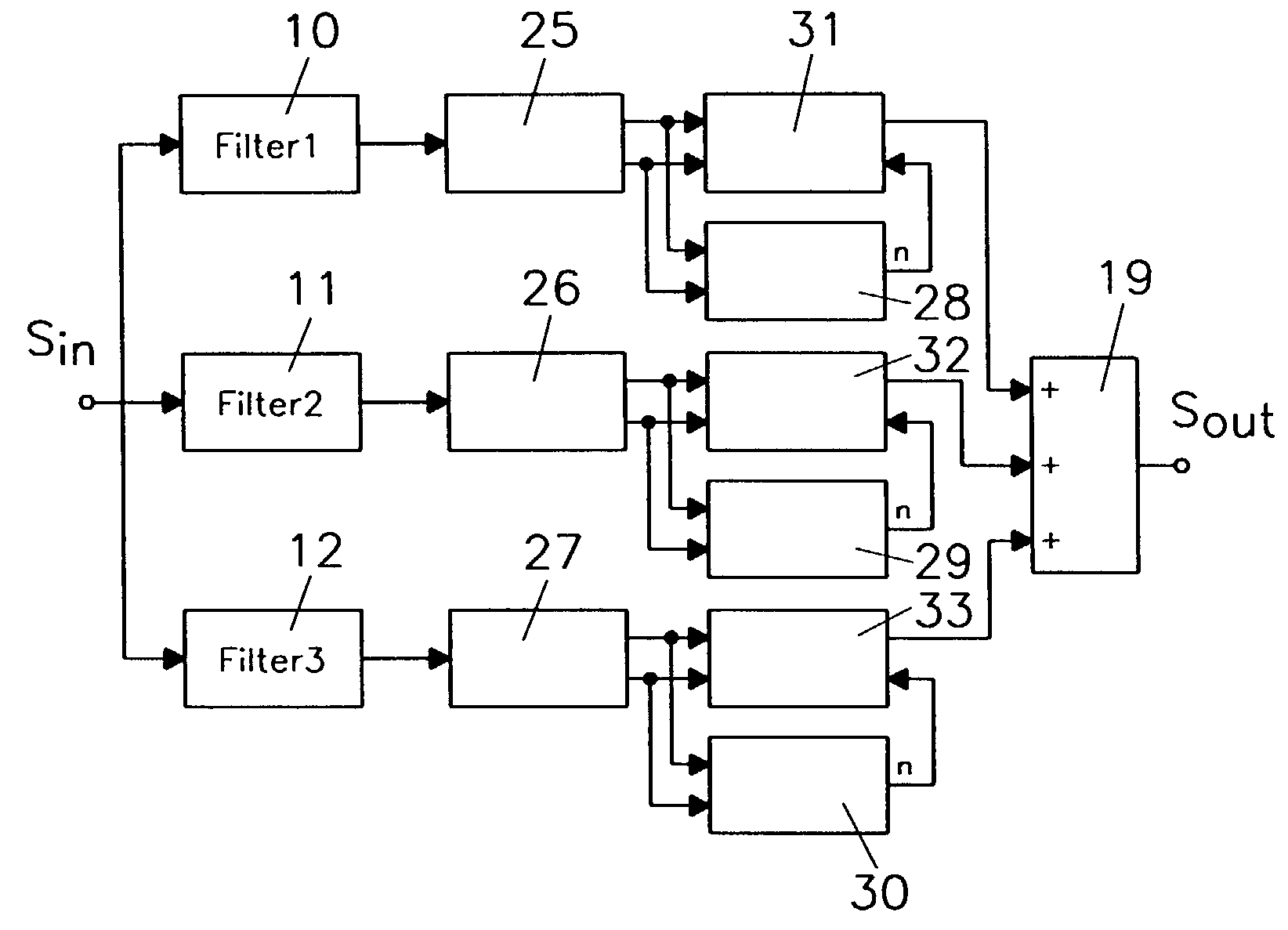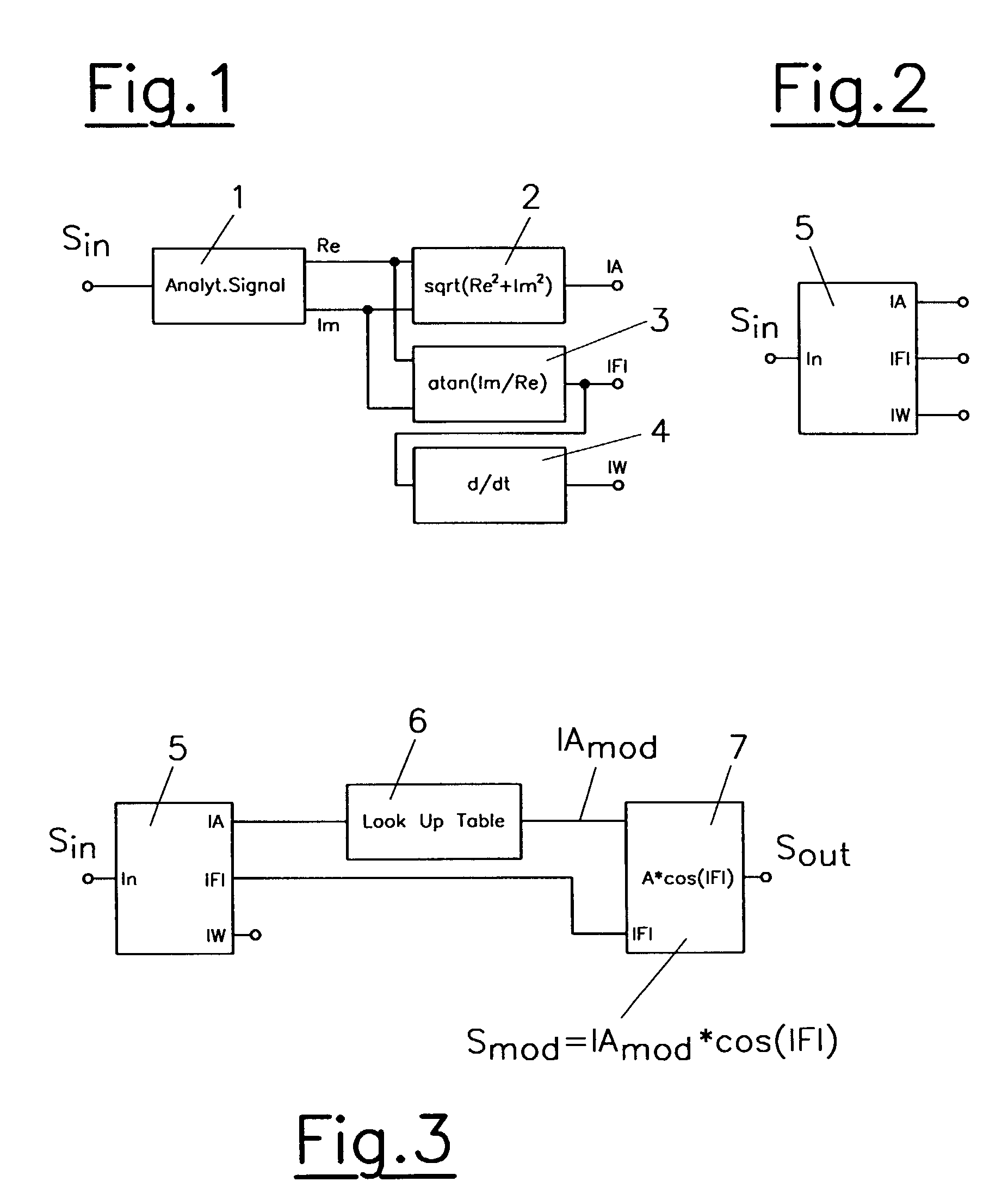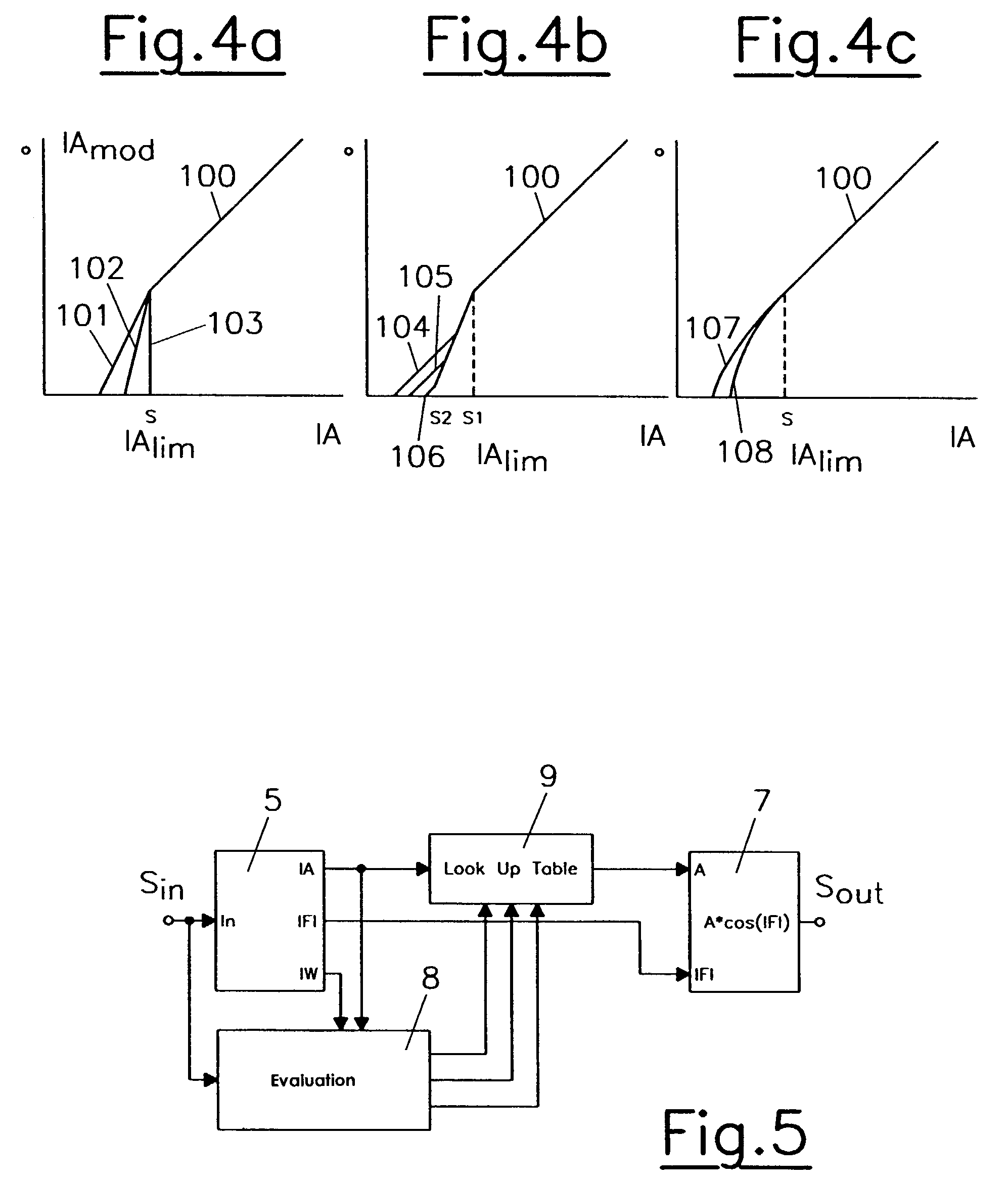Method for suppressing noise as well as a method for recognizing voice signals
a voice signal and noise suppression technology, applied in the field of suppressing noise and recognizing voice signals, can solve the problems of only working at a relatively constant disturbance, methods are subject to certain limits, and the speech concerns a highly complex signal, and achieves high correlation, fast and reliable evaluation, and high correlation of ia.
- Summary
- Abstract
- Description
- Claims
- Application Information
AI Technical Summary
Benefits of technology
Problems solved by technology
Method used
Image
Examples
Embodiment Construction
[0086]FIG. 1 shows a general circuit in which an instant amplitude signal IA, an instant phase signal IFI and an instant radian frequency signal IW are gained from an input signal. In a first block 1 the input signal Sin is converted into an analytical signal which consists of a real component Re and an imaginary component Im. Since the real component and the imaginary component show a constant phase difference of π / 2, the imaginary component Im represents the Hilbert transform of the real component Re. These signals Re and Im are thus also called Hilbert signals. Possibilities for gaining the analytical signal have been described in EP 542 710 A. Substantially, the input signal Sin can be subjected to a Hilbert transformation in order to obtain the imaginary component Im. Since the Hilbert transformation entails a delay, the input signal Sin also needs to be delayed in order to obtain the real component Re. An alternative possibility is converting the input signal Sin by two differ...
PUM
 Login to View More
Login to View More Abstract
Description
Claims
Application Information
 Login to View More
Login to View More - R&D
- Intellectual Property
- Life Sciences
- Materials
- Tech Scout
- Unparalleled Data Quality
- Higher Quality Content
- 60% Fewer Hallucinations
Browse by: Latest US Patents, China's latest patents, Technical Efficacy Thesaurus, Application Domain, Technology Topic, Popular Technical Reports.
© 2025 PatSnap. All rights reserved.Legal|Privacy policy|Modern Slavery Act Transparency Statement|Sitemap|About US| Contact US: help@patsnap.com



